 "QUANTUM SHOT" #403
"QUANTUM SHOT" #403link
Some of them are buried deep in the Caucasus mountains, others are lurking in abandoned salt mines underneath forgotten villages, yet others are set up deep underwater in Lake Baikal - all are fully functional, facilitating cutting-edge research, with scientific progress routinely made on glaringly obsolete equipment.
Neutrino Detection - deep under Ukrainian village
The slightly creepy "Deep Underground Detection Facility" is located inside salt mines near the city Artemovsk (Donbass region) and maintained by the Russian Institute for Nuclear Research (RAS):
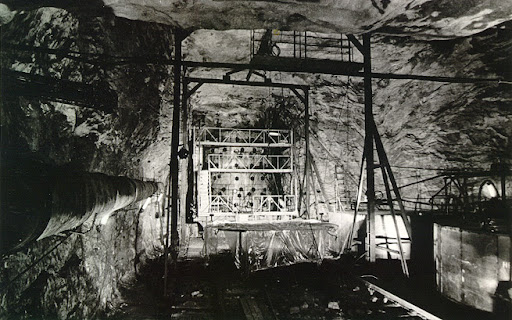
The entry into the mines (and caverns with a 100-ton particle detector) looks almost surreal - just a door in a typical Ukrainian country cottage!
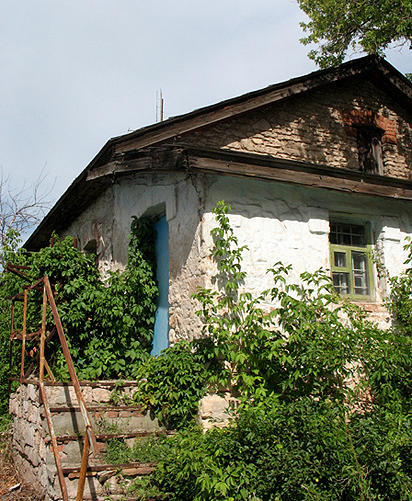
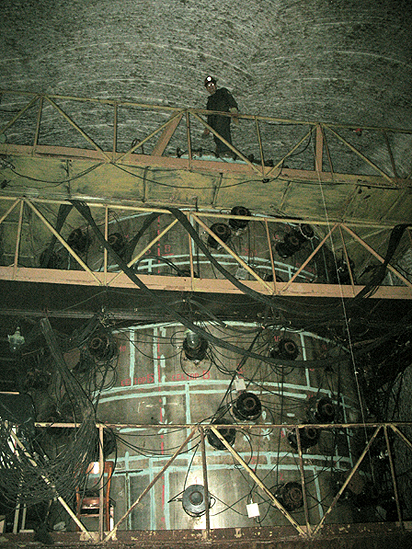
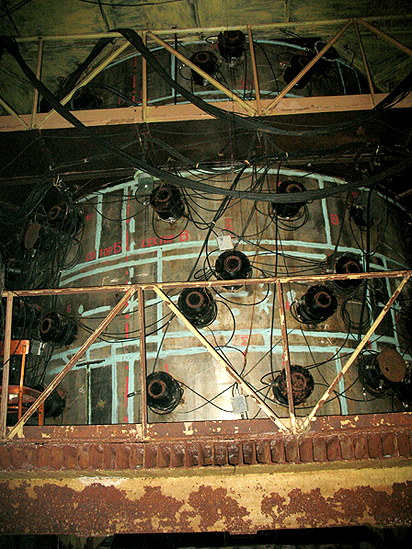
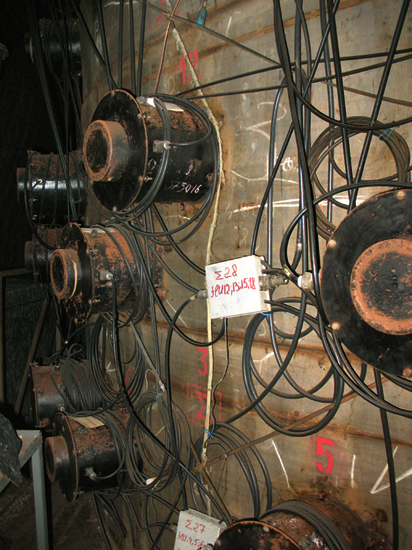
One would never guess that a huge Scintillation Neutrino Telescope & Detector "hides" at the depth of 600 meters under the almost-deserted village -
Enter into the cottage, though, and you'll see some scientific equipment and a 30 year old TV set:

The bizarre thing about this facility is that it even has a deep underground Orthodox Church in a chilly cave:

And... some seriously creepy statues (or remains?) of miners, standing along the walls -

(images credit: inr.ru)
Now compare the spookiness of this stronghold of science with CERN's Large Hadron Collider
---------------------
Into the Tunnels! - Baksan Neutrino Observatory
Danila is one of the most active members of the Russian urban exploring community. Among his recent adventures - getting inside the tunnels and checking out Baksan Underground Scintillation Telescope, buried deep within a mountain. With his exclusive permission, here are some photos of that fascinating facility:
Baksan Neutrino Observatory (BNO) is situated in the Baksan gorge in the Caucasus (Kabardino-Balkaria Republic). It's maintained by the Russian Institute for Nuclear Research (RAS) and includes Baksan Underground Scintillation Telescope (BUST) - at a depth of more than 300 m from the surface. Link for Google Maps - click here.
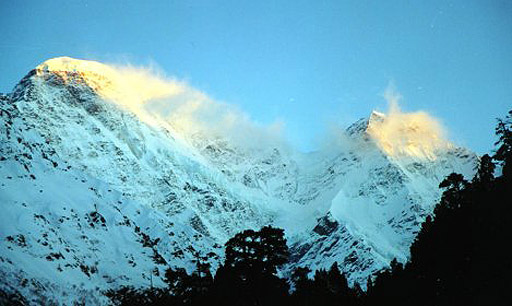
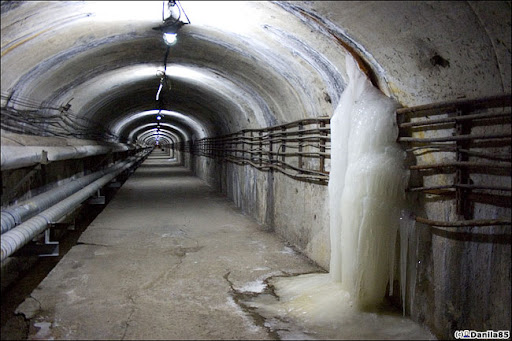
Most of it is located in two caverns connected by a tunnel system inside Andyrchi Mountain; tunnels were dug by the Moscow Metro builders in 1978.
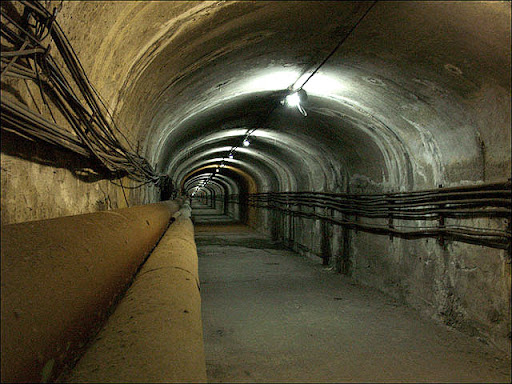
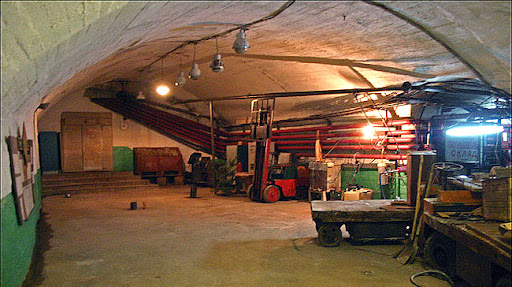
Part of the huge Scintillation Telescope, with various sensor set-ups:
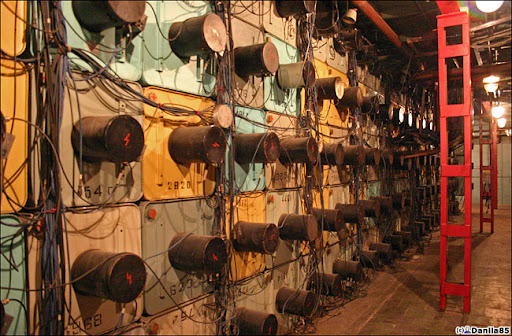

Upper and lower levels - they remind me of the egg-hatching room in "Aliens" -
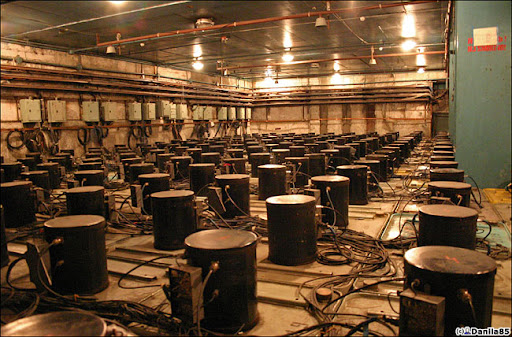

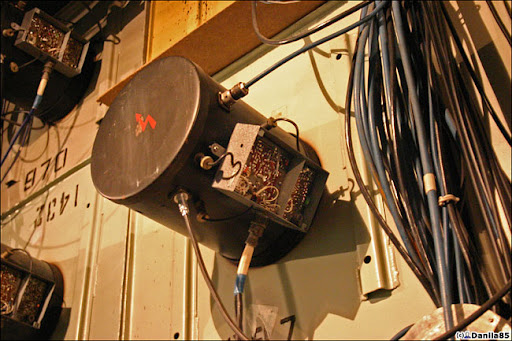

This is the main entry -
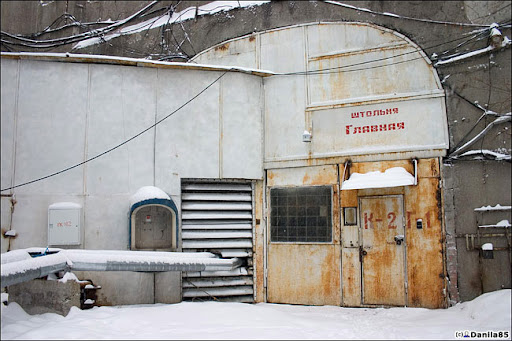
And the secondary entry (note the Moscow Metro symbol above) -

The only way to the facility is across this bridge:
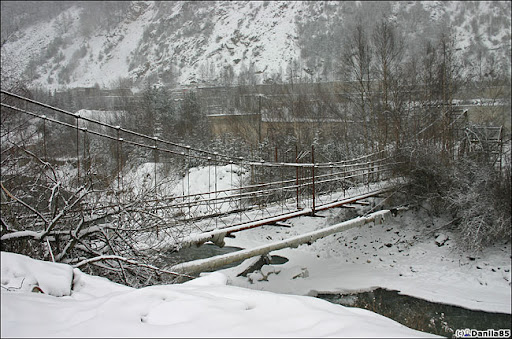
This is an avalanche hazard zone: check out this stone, brought by a rogue avalanche not long ago (three people perished here) -
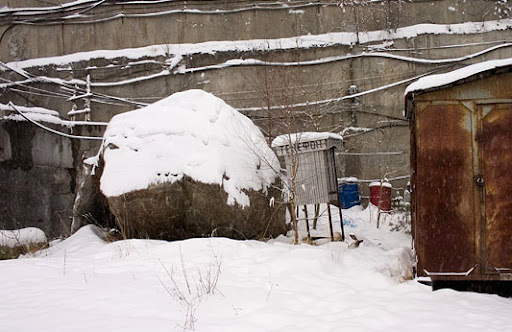
Note also the Cold War Phone (one of the models we covered in this article) -
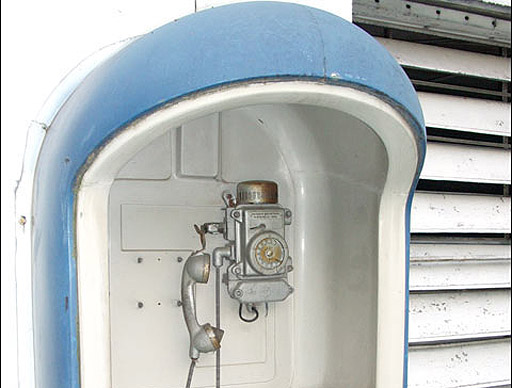
See more pictures of Danila's exploration of this site here.
The facility depicted here is not even the deepest. That honor goes to the Underground Laboratory of Gallium-Germanium Neutrino Telescope (GGNT) - it's buried 3.5 kilometers deep in the mountain rock.
---------------------
Large-scale Research Facility Near Moscow
Another experiment, called Troitsk Neitrino Mass Experiment is located in a facility 20km from Moscow. (more info here) - it's designed to measure the the mass of a neutrino using unique high-resolution beta-spectrometer on the basis of a large superconducting magnetic trap:
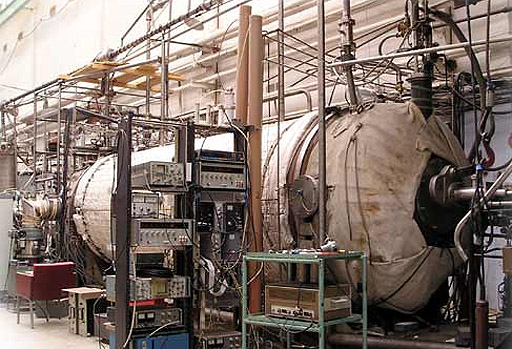

(images credit: Sergey Zadorozhny)
Moscow Meson Factory - (Man, I love that name... more info about it here) also includes high intensity linear accelerator, and isotope production facility. It was awarded the 2001 Russian Federation Government Prize for the work on development and construction of the accelerator:
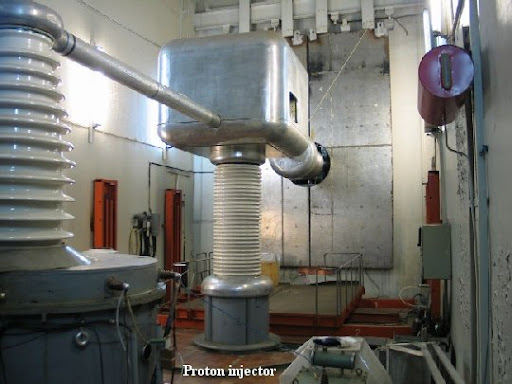

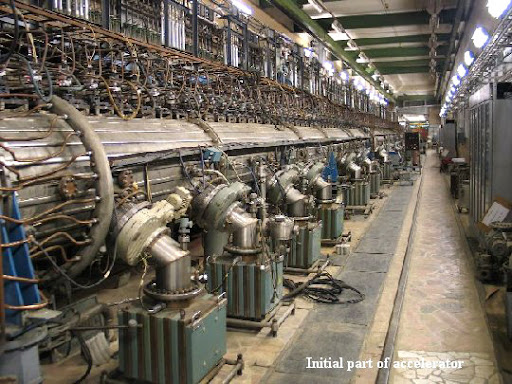
(images credit: inr.ru)
---------------------
A Telescope In the World's Deepest Lake
RAS also has another facility, literally inside Lake Baikal - a Deep Underwater Neutrino Telescope (BDUNT) - situated at a depth of 1200 m. in the lake.
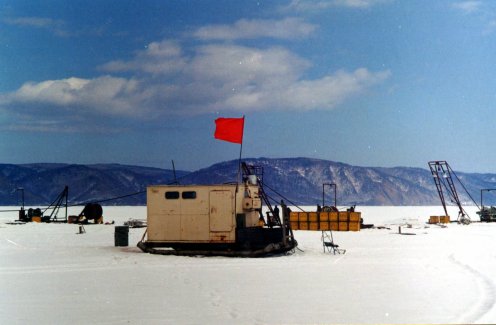
It's intended to study the high-energy muon and neutrino fluxes in the cosmic rays, which should shed the light on "magnetic monopoles and massive particles" and "dark" matter.
It's surely one of the world's largest high energy neutrino detectors - more than one thousand square meters detection area.
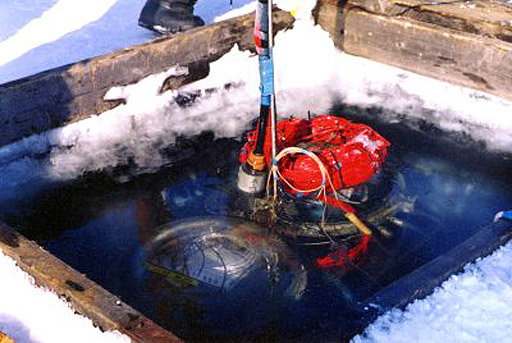
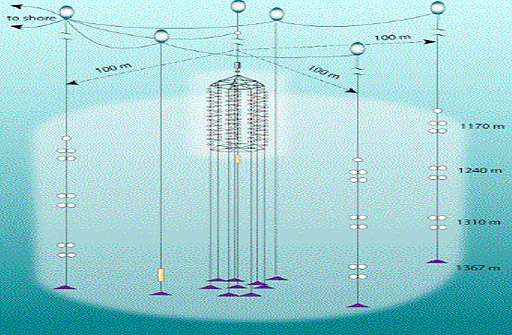
(images credit: inr.ru)
Be careful when fishing in Baikal in these parts - you just might hook up a whole building-block size antenna.
---------------------
As you can see, scientific research in Russia is fraught with unexpected adventure and hidden challenges. It also provides a fairly large exploring ground for adventurous photographers. One word of advice - just do not climb inside a manhole, which is clearly marked as a "dead end" -
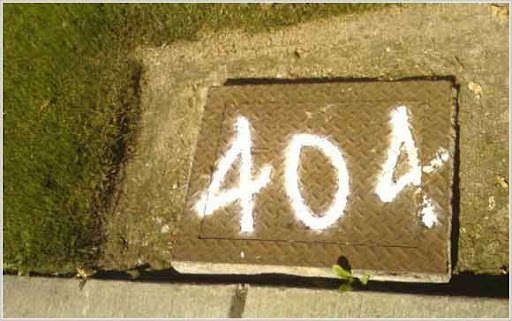
Read about other adventures in Abandoned Places category.
Permanent Link...
 ...+StumbleUpon
...+StumbleUpon  ...+Facebook
...+Facebook Category: Abandoned Places,Science
Dark Roasted Blend's Photography Gear Picks:







0 comments:
Post a Comment